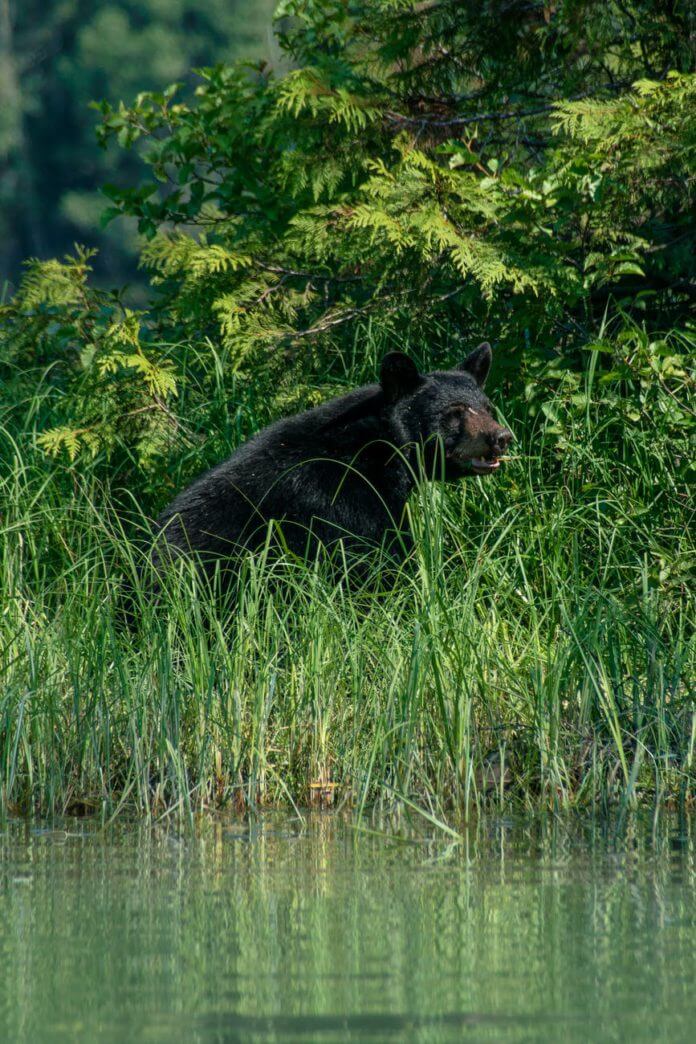Officials are advising residents to take steps to prevent bear encounters and keep “bear safe.”
”Bears are coming out of hibernation in the NWT,” warned GNWT’s Department of Environment and Climate Change in an announcement today.
They outlined these steps, advising the public:
“Don’t invite them in!”
The GNWT is urging people living in the territories to avoid activities that bears might perceive as “inviting.”
“Avoiding encounters starts with not inviting bears to your home, cabin, or community. Negative encounters are more likely when bears are in populated areas, and if bears become food conditioned to human food and garbage, they are more likely to stay close to people and less likely to stay in the wild,” warn officials.
They advise these steps “to keep yourself and the bears safer”:
- NEVER feed wildlife.
- Keep food, pet food, gas, and other potential attractants inside or in airtight containers.
- Bear-proof your garbage by keeping it indoors, in a shed, or in a secured container that locks or stays firmly closed so a bear can’t get it open
- Don’t clean fish or field dress harvested wildlife close to communities, cabins or homes. Safely dispose of the remains away from places frequented by people to prevent human bear conflicts.
“Be prepared on the land”
The Department of Environment and Climate Change recommended taking these steps to avoid negative encounters with bears on the land:
- Keep deterrents like bear spray, air horns and/or bear bangers on you – and know how to use them.
- Don’t leave garbage or food waste behind and bear proof your camp site by keeping it clean.
- Make noise, travel in groups and carry bear spray.
- Keep your dog on a leash at all times.
- Be on the look out for fresh bear signs and leave the area if you find any.
“If you see a bear”
Officials recommend following these steps in case of a bear encounter:
- Stay calm
- Keep your distance
- Back away quietly, speak calmly, and DO NOT run
- Try to stay downwind to avoid the bear from smelling you
- Make loud noises by using an air horn, whistle, or clapping hands to scare them away
- Have your bear spray ready
- Report all sightings that are within and around the community to your region’s wildlife emergency line
Anyone who wants to find the wildlife emergency line can go to the GNWT’s reporting page
“Bear behaviour indicators and what they mean”
- Bear climbing tree = The bear is frightened, seeking safety or escape from potential danger.
- Bear running away from you = The bear may be frightened and actively avoiding confrontation.
- Bear walking away, looking behind = The bear is escaping but checking to see if the danger persists, showing caution.
- Bear ambling haphazardly = The bear is likely unconcerned, relaxed, or unaware of any immediate threat.
- Bear looking at you = The bear could be curious, trying to assess the situation from a distance.
- Bear standing on hind legs and looking at you = The bear is likely curious, possibly trying to get a better view or more information.
- Bear approaching, stopping periodically = The bear is curious but hesitant, unsure whether to approach further or retreat.
- Bear pawing the ground and/or snorting = The bear is displaying aggression or defensive behavior, possibly due to a perceived threat.
- Bear walking directly toward you with head down = The bear is likely in a predatory stance, possibly preparing to attack or view you as a threat.
“If a bear charges”
- Make loud noises and do not turn your back.
- Many charges are bluffs. The bear will often veer to the side at the last minute.
- Use bear spray only at close range.
- If you have a firearm and contact appears unavoidable, shoot to kill.
- If it’s a grizzly bear, you play dead during an attack, lie on your side, curl into a ball with your legs tight to your chest and hands clasped behind your neck.
- When you’re safe, report it to your region’s wildlife emergency line right away
“Bears in the NWT”
The GNWT reminded residents to be mindful that the region is home to many species of bears.
“The NWT is a bear territory. It’s home to black, grizzly and polar bears. Bears normally avoid contact with people, but if they or their cubs become habituated to human food or garbage, they may lose their fear of humans and will become a problem,” explained.
Officials said that encounters are most common in spring as bears emerge after hibernation, and late summer through fall when they’re working to fatten up for winter.
The Department of Environment and Climate Change suggests that residents review bear safety resources





